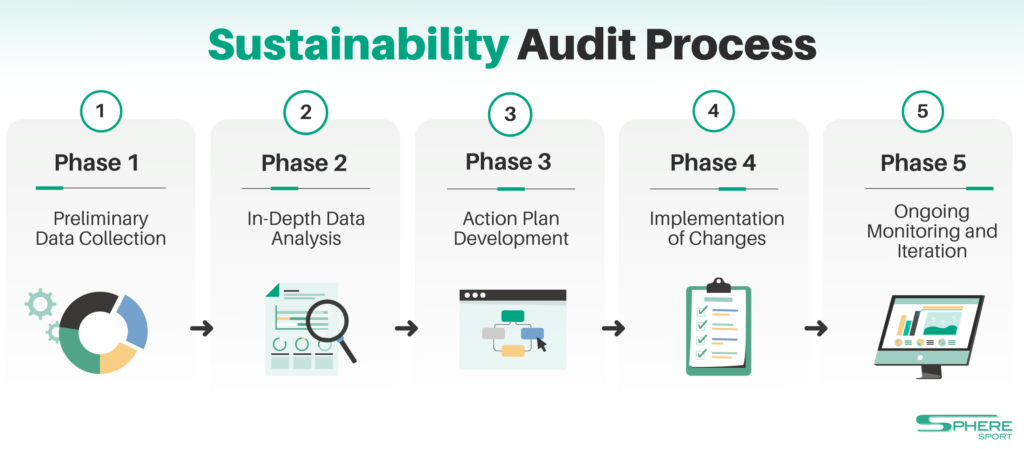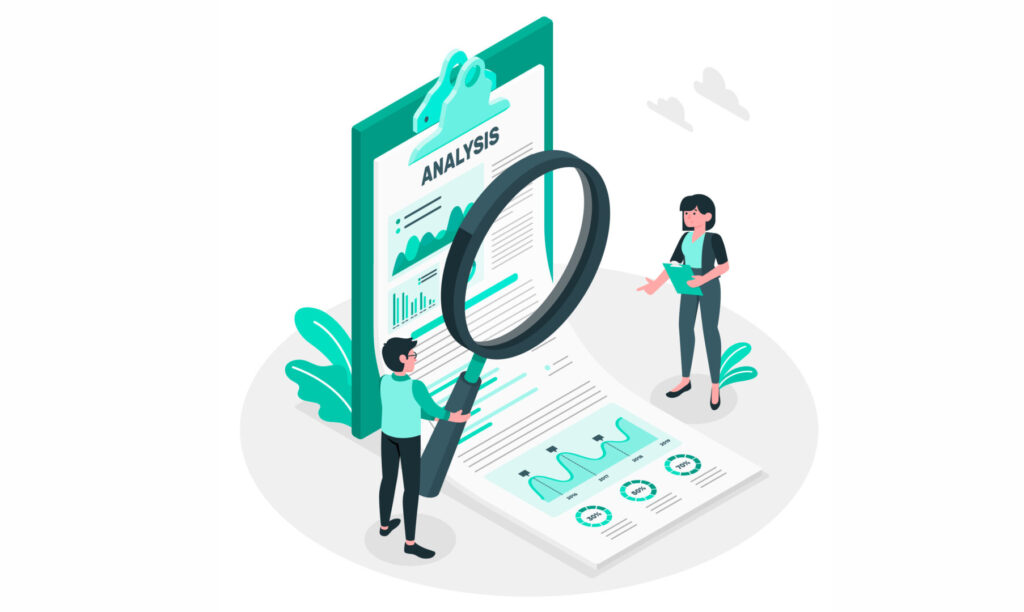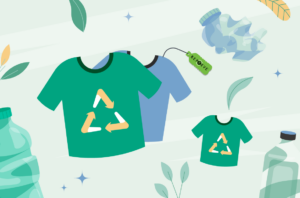Introduction
In a world where sustainability has become more than just a buzzword, consumers are increasingly demanding ethical and eco-friendly options. Apparel brands are no exception to this trend. As an industry notoriously linked with fast fashion and environmental damage, the time is ripe for apparel companies to take a stand. One of the most effective ways to address these issues is through a sustainability audit.
This comprehensive guide aims to offer an in-depth look into what a sustainability audit is, why it’s essential, and a step-by-step roadmap to conduct one successfully. Ready to lead your brand into a more sustainable future? Let’s dive in.
Importance of a Sustainability Audit
The importance of a sustainability audit cannot be overstated in today’s eco-conscious market. Not only does it offer a comprehensive evaluation of your brand’s environmental and social impact, but it also serves as a strategic roadmap for future improvements. Without taking the time to audit your brand’s sustainability, problems can pile up that are costly to solve in the future.
What is a Sustainability Audit?
A sustainability audit is a systematic review that assesses how well a company adheres to a set of ethical and environmental standards. It helps organizations understand their current sustainability performance and identify areas where they can improve.
A well-executed audit provides valuable insights into your supply chain, labor practices, and overall sustainability efforts, setting the stage for informed decision-making. In an age where consumers are increasingly valuing sustainability, an audit acts as a crucial tool for not just risk mitigation but also for driving brand value and customer loyalty.
Benefits of a Sustainability Audit
- Transparency and Trust: An audit allows you to be transparent about your sustainability initiatives, a crucial factor in building trust among consumers and stakeholders.
- Financial Savings: By identifying and cutting back on waste or inefficient practices, companies often find that sustainability ultimately leads to cost savings.
- Risk Mitigation: Anticipating sustainability risks can protect you against future challenges, including legal issues and customer backlash.
- Competitive Edge: Emphasizing sustainability can give your brand a significant edge in an increasingly competitive marketplace.

Prepare for Sustainability Audit
Preparing for a sustainability audit is a crucial step toward aligning your business practices with your eco-friendly mission. This process allows you to thoroughly assess your current operations, identifying areas where sustainability can be enhanced.
Assembling the Right Team
The first step in conducting a sustainability audit is to assemble a team responsible for managing and executing the audit process. This team should ideally include:
- Supply Chain Managers: To examine supplier sustainability.
- Design and Production Teams: To assess product sustainability.
- Marketing and PR Teams: To manage brand messaging and customer communication.
- HR and Social Compliance Officers: To examine labor practices.

Choosing a Framework
Various frameworks and guidelines can help you navigate the complexities of sustainability auditing. Select a framework that aligns with your brand’s sustainability objectives for a more targeted approach.
Some popular options include:
- Global Reporting Initiative (GRI)
- Sustainable Apparel Coalition’s Higg Index
- ISO 26000 Social Responsibility Standards
- B Corp Certification Guidelines
Setting Objectives and KPIs
Before diving into the auditing process, outline what you aim to achieve. Once objectives are set, define key performance indicators (KPIs) that will help measure success or identify areas for improvement.
Objectives could include:
- Reducing carbon footprint
- Minimizing water usage
- Improving labor conditions
- Reducing waste
- Obtaining eco-friendly certifications

The Sustainability Audit Process
Understanding the importance of a sustainability audit is one thing, but executing it is where the real work begins. To help you navigate this critical process, we’re breaking down the sustainable audit phase into actionable steps, replete with practical examples and real-world applications.
Phase 1: Preliminary Data Collection
This phase serves as the groundwork for your sustainable transformation, equipping you with the knowledge you need to make data-driven, impactful changes.
Supply Chain Assessment
- Map Out Your Supply Chain: List all the suppliers involved in each stage, from raw materials to end products.
- Supplier Surveys: Create a standardized supplier questionnaire asking them about their sustainability practices, like waste management and energy usage among with other key questions.
- On-Site Visits: Schedule visits to key suppliers to observe and assess their operations first-hand.
Example: If you source cotton from a particular farm, inquire about its water use, pesticide policies, and labor conditions.
Energy and Water Use
- Audit Utility Bills: Review the last 12 months of utility bills to establish a baseline for energy and water consumption.
- Check Equipment: Identify any outdated equipment that could be replaced by more energy-efficient models.
- Consult an Expert: Optionally, hire an energy auditor to pinpoint exact areas of wastage.
Example: If your factories operate heavy machinery, investigate whether newer, energy-efficient models could reduce your carbon footprint.
Waste Management Practices
- Waste Inventory: Take stock of the kinds of waste generated and their volumes.
- Waste Tracking: Attach tracking devices or barcodes to waste bins to quantify exactly what goes out.
- Waste Audit: Conduct periodic waste audits to assess the effectiveness of your waste management plan.
Example: If fabric scrap waste is high, consider donating it or converting it into other usable products.
Labor and Social Practices
- Employee Surveys: Anonymously ask the right employee survey questions about their work conditions.
- Third-Party Audits: Contract third-party social compliance audits for an unbiased review.
- Review Policies: Ensure your company policies align with internationally accepted labor standards.
Example: Review overtime policies to ensure compliance with laws and assess the real-world impact on employees.
Customer Engagement and Perception
- Online Surveys: Use platforms like SurveyMonkey to create and distribute sustainability-focused customer surveys.
- Social Media Polls: Quick polls on platforms like Instagram can yield instant customer opinions.
- Review Customer Service Logs: Look for sustainability-related queries or complaints to gauge customer concerns.
Example: Ask customers what they value most in sustainable fashion—choices could range from ethical labor to organic materials.

Phase 2: In-Depth Data Analysis
Data collection is only half the battle in conducting a sustainability audit; the true value emerges through meticulous analysis. Phase 2 acts as the bridge between your initial data gathering and your action plan, ensuring that your sustainability efforts are both effective and targeted.
- Spreadsheet Modeling: Compile all the data into a spreadsheet for easier analysis. Apply formulas to compare against industry benchmarks.
- SWOT Analysis: Use the compiled data for a targeted SWOT analysis.
- Expert Consultation: Invite a sustainability expert to review the data and offer specialized insights.
Phase 3: Action Plan Development
Action plan development is the pivotal stage where insights turn into initiatives. After carefully analyzing the data collected and assessing your sustainability gaps, this phase focuses on creating a comprehensive, actionable plan tailored to your specific needs and objectives.
- SMART Goals: Define specific, measurable, attainable, relevant, and time-bound sustainability goals.
- Detailed Steps: List out each action required to achieve these goals, assigning responsible teams and deadlines.
- Budget Estimation: Estimate the costs involved for each action step.
Phase 4: Implementation of Changes
This phase is where your sustainability journey truly comes to life. After exhaustive audits, evaluations, and planning, this is the stage where you put those well-laid plans into action.
- Pilot Testing: Before full-scale implementation, test the changes in a smaller setting.
- Training Sessions: Educate your team on the new procedures, compliance requirements, and goals.
- Weekly Check-ins: Keep track of the implementation process through weekly meetings.
Phase 5: Ongoing Monitoring and Iteration
Ongoing monitoring and iteration is the continuous improvement stage of your sustainability audit. Having implemented changes based on earlier phases, this is where you regularly track and analyze key performance indicators to gauge the effectiveness of your sustainability initiatives.
- Quarterly Reports: Every quarter, measure the KPIs and present the findings to the team.
- Adjust Strategies: Based on quarterly reports, modify your strategies for better results.
- Stakeholder Updates: Keep all stakeholders in the loop about progress and changes through regular reports.
By following this comprehensive, practical guide, you’ll not just be “doing an audit” but truly embarking on a journey to make your apparel brand more sustainable, ethical, and ultimately, successful.
Conclusion
Conducting a sustainability audit may initially seem like a daunting task, but the long-term benefits far outweigh the efforts. A sustainability audit not only helps in aligning your apparel brand with global standards but also builds a strong, authentic relationship with your consumer base.
If you’re serious about elevating your apparel brand’s sustainability, there’s no better supplier than Sphere Sport. As a B2B sportswear manufacturer, we offer a range of eco-friendly fabrics, innovative packaging options, and have consistently high scores on our BSCI audits.
Located in Dongguan, China, we’re at the forefront of integrating sustainability into the sports apparel space. Don’t just take our word for it — experience the Sphere Sport difference yourself and make your brand synonymous with sustainability.
Contact us today to learn more or to request a sample of our sustainable fabrics. Let’s create a future where sustainability and sportswear go hand in hand.






